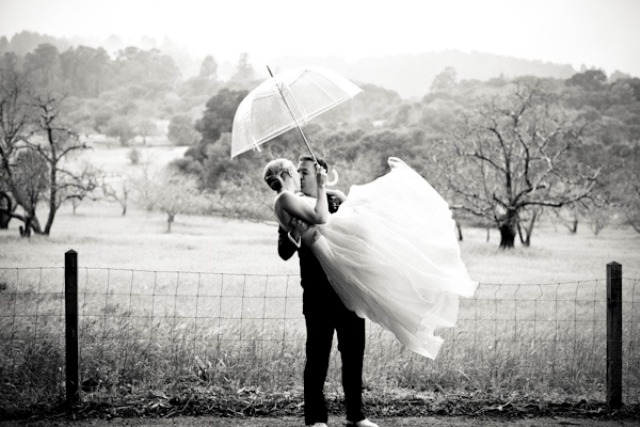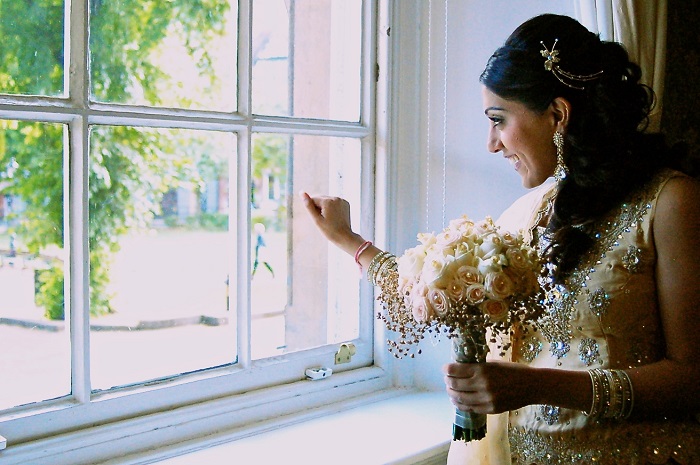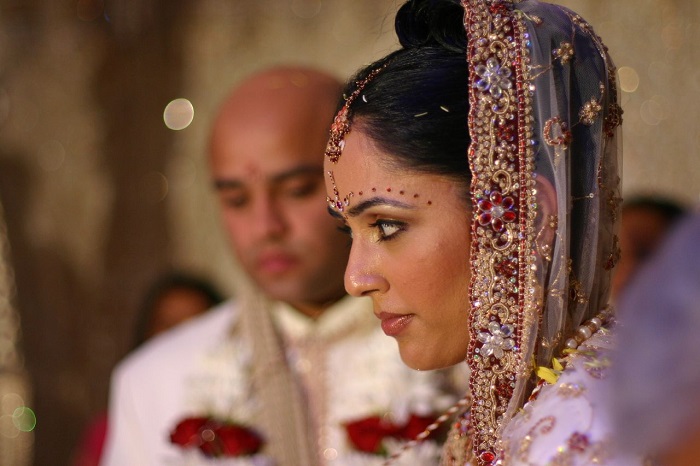In a country with a population of over a billion, where more than 1500 languages are spoken and with 29 (as of 2014) states, it can be easily said that India is synonymous with diversity. So, today, we are making a humble effort to present few interesting and little known facts about Indian weddings, some of which actually present the country and its colourful traditions in a lighter vein.
Similarities in Diversity
In many western countries, it is considered bad luck if it rains on the wedding day. However, in India, rain on the wedding day is considered a sign of cleansing and fertility.
Just like in European countries where a bride has to wear a veil to ward off the evil spirits; Indian brides also wear wedding veils (covering not just their heads and faces but also their backs) to prevent men (other than their would-be husband) to look at them. Perhaps this is also the reason why it is customary to gift knives to a girl getting married, in some parts of the country, so she can ward off unwanted male attention! Similarly, grooms in Northern India also have to wear a ‘sehra’ (a veil made of flowers) to protect him from the evil eye.
Bidaai or the departure ceremony is usually tearful. But it is believed that if the bride cries then, she will always be happy in her married life.
In Gujarat, the bride’s mother has to ‘playfully admonish’ her son-in-law by trying to catch his nose during the rituals. This is to remind him to always treat her daughter well. A similar ceremony exists in Marathi weddings, where the bride’s brother playfully twists the groom’s ear to extract a similar promise from the groom.
In both, Hindu as well as Indian Muslim weddings, a similarity is that the couple to be married has to have a purification bath. In Hindu weddings, this Mangal Snanam is done on the morning of the wedding at the first light, while in Islamic weddings; it is done every day for five days leading up to the wedding.
In Hindu and Sikh cultures, brides tilt a vessel with their right foot, containing food grains on the threshold of the husband’s home to symbolize bringing in wealth and prosperity in her new abode.
Facts about Indian weddings and changing customs
Not all Indian weddings are long, loud and noisy. There are many factors which affect the customs and length of celebrations such as religion, economic status, education level etc.
While the dowry system is no longer prevalent, many parts of the country still see the groom receiving handsome amounts of money from the bride’s family. The converse is true in Indian Muslim weddings. A custom called Meher is followed here, where jewellery, cash or other valuable gifts are given to the bride by the groom before and after consummation of the marriage.
It is considered inauspicious to wear black or white to the Hindu wedding as these are considered colours of mourning. Different shades of white are however quite popular today and many modern brides choose white lehengas or saris with colourful borders and embellishments. The fact remains that neither the bride nor the attendees must avoid wearing complete white to Indian Hindu weddings.
The history of Indian wedding jewellery is nearly 5000 years old and inspired by culture or nature depending on the region where it is created. For example, in many Southern and Western states, the jewellery is inspired by local flora and fauna while the kundan jewelry is believed to have Mughal roots. Bangles are important part of a bride’s ensemble and trousseau. In some parts of India, brides need to wear smallest possible glass bangles (as smaller they are the happier the couple). In Punjab, brides have to wear white and red Choorah for luck and happiness. In the past, the bride’s glass bangles were meant to be broken following the husband’s death. Today, bangles are made of precious metals and stones.
Mock wedding and Bride Kidnapping!
A mock wedding ceremony used to be prevalent in many Keralalite societies in the past. This was known as the Thaali Ketu Kalyanam ceremony, where a young girl, at the onset of her puberty, was forced to marry a man (often much older than her) just on the basis of their matching horoscopes. This supposedly brought good luck to the couple. The groom was later free to desert his young bride, if he wished, since it was only a mock wedding. Thanks to the efforts of a social reformer, Sree Narayan Guru, this custom was ended.
Some patriarchal tribes of Central India still practice the ritual of kidnapping a bride. (The bride kidnapping ritual is actually practiced in many parts of the world including Africa, Europe, Mexico and south East Asia.) It involves the villagers chasing the couple. If they cannot find them after a few hours, the couple is considered married. Such ‘Marriage by Capture’ is prevalent in some tribal areas of the country despite Government’s attempts to stop the practice.
We hope you enjoyed these facts about Indian weddings. Do comment below if you know of any we might have missed.
All images via flickr.com and search.creativecommons.org.



